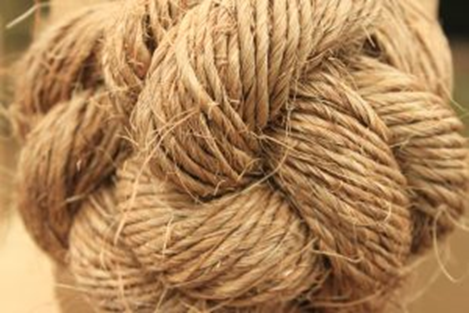Structure Analysis of Rotor Spinning Machine

Introduction:
Among the range of open-end spinning technologies, rotor spinning is commercially more widely used because a wider range of yam counts can be spun with appropriate yar properties: Since its commercial introduction in 1969, rotor spinning has developed continuously. Rotor speeds have increased from around 30,000 rpm to over 150,000 rpm.
Objectives of Rotor Spinning:
Rotor spinning was initially developed with two main objectives.
To provide a more economical spinning system than conventional ring spinning through
higher productivity, and To produce yarn of a quality that matches or surpasses that of the conventional ring
spinning The first objective has been accomplished Today, rotor spinning has a production rate exceeding 200 m/min, as compared to a maximum of about 40 m/min in ring spinning. Rotor spinning climinates the need for roving, since rotor yams can be spun directly from drawn sliver Unlike a ring frame, the winding and twisting functions are separate and this permits the building of large yarn packages. Both these characteristics allow much higher levels of productivity than ring spinning The second objective has not yet been achieved because of the structure of rotor yarns, which also limits the fineness of count that can be spun Perhaps the biggest current obstacle facing rotor spinning is the fact that it is limited to coarse and medium yarn counts (16 lex to 120 tex) while ring spinning excels in the medium to fine counts (finer than 16 tex)
The main features of a rotor spinning machine:
- a feed roller and feed plate.
- a saw tooth or pin covered roller called an opening roller.
- a shallow cup called as rotor (which includes a groove cut into the circumference at the maximum internal radius of the rotor referred to as the rotor groove).
- a flange tube facing the rotor base and co-axial to the rotor, termed the doffing tube.
- a pair of delivery rollers that feed the spun yarn to the package build device.
Opening roller:
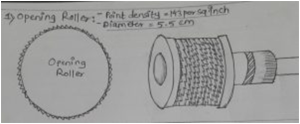
The opening roller removes the fiber from the sliver as it is fed in, and, after two or three rotations, delivers them to the feed tube in which the airflow takes them to the rotor. The trash particles are extracted by centrifugal forces in the first 90 degree of the opening roller revolution. The majority of rotor machines use a 50-80 mm diameter steel opening roller (also known as an opener, beater roller or disintegrator) which functions in a manner similar to that of the taker-in roller on a carding machine. It is designed to be fed by sliver usually ranging from about 40-300 times thicker than the yarn count to be produced, depending on the machine design. If fibre feed is too slow, particularly with thick sliver, the result is a longer operating time for the opening roller, leading to fibre damage and excessive dust formation. If the fibre feed is too fast, it will spend less time in the opening roller and opening will be inadequate.
Rotor:
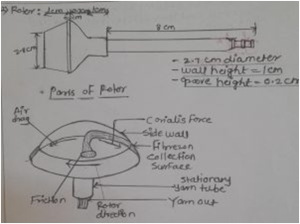
The rotors used in rotor spinning are shown in Figure The important rotor parameters which have significant effects on the spinning process and yarn quality are
- fiber feed-in conditions (feed-in height relative to the rotor groove, feed-in direction,
- fiber feed-in speed relative to peripheral rotor speed).
- rotor groove diameter
- rotor groove shape (aperture angle, groove radius and depth)
- rotor wall and rotor groove roughness
- rotor wall inclination and surface quality
- rotor speed
The most important of these are rotor diameter and speed, the design of the rotor
groove and the rotor wall. These are discussed below.
The rotor groove:
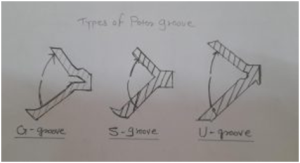
The configuration of the rotor groove has a pronounced effect on spinning stability, rotor groove dust loading and yarn quality. The most important parameters in this connection are groove radius, groove angle and groove surface roughness. The more open (depending on yam diameter) and smoother the rotor groove, the better the yarn twist penetration, resulting in good spinning stability and bulkier yarns. Rotors with deep. narrow and rough grooves offer advantages in terms of yarn quality.
A G-groove rotor with a narrow groove is suitable for finer count yarns providing the fibres are clean since this design of groove difficult to clean and has a tendency to produce moire effects in the yam. This type of groove is recommended for knitted yarns. The S- groove rotor has a sharp edge and is suitable for dirty cotton and coarser counts with less tendency to produce a moire effect. The U-groove rotor has a wider groove suitable for coarser counts and produces a O higher strength yam than the S-groove..
The rotor wall:
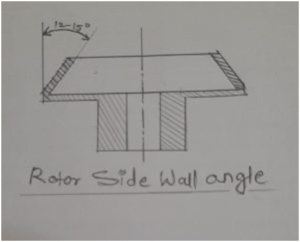
The roughness of the rotor wall is determined by the rotor coating A rough surface gives higher yarn quality. On the other hand, too much roughness with a small wall inclination angle O may affect spinning stability. Rotor wall unevenness amplifies this effect Suitable rotor geometry, precision production and the night fiber feed-in (closer to the rotor groove in the case O of a small wall inclination angle) are important requirements.
The take-off nozzle:
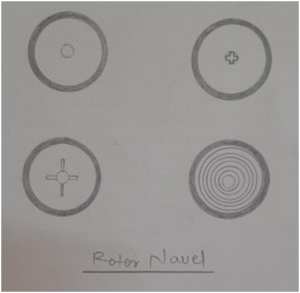
As has been noted, to start spinning a seed yarn is introduced into the yarn tube until it contacts the collecting surface and become trapped in the strand of fibres. Yarn withdrawal then O commences with the fibre layer peeled from the collecting surface. Continuity is maintained by O the continuous stream of fibres arriving on the collecting surface to replace the fibres removed as O the withdrawal point moves stendily around the collecting surface usually in the same direction as the rotor rotation. This is termed normal withdrawal. The yarn follows a smooth curve and yarns of good appearance are produced. Occasionally there is a spontaneous change of motion of O the yarn withdrawal point and it moves around the rotor in the opposite direction. This may be described as reverse withdrawal In this case, because of air drag, the yarns form an ‘S curve and yam appearance is adversely affected.



